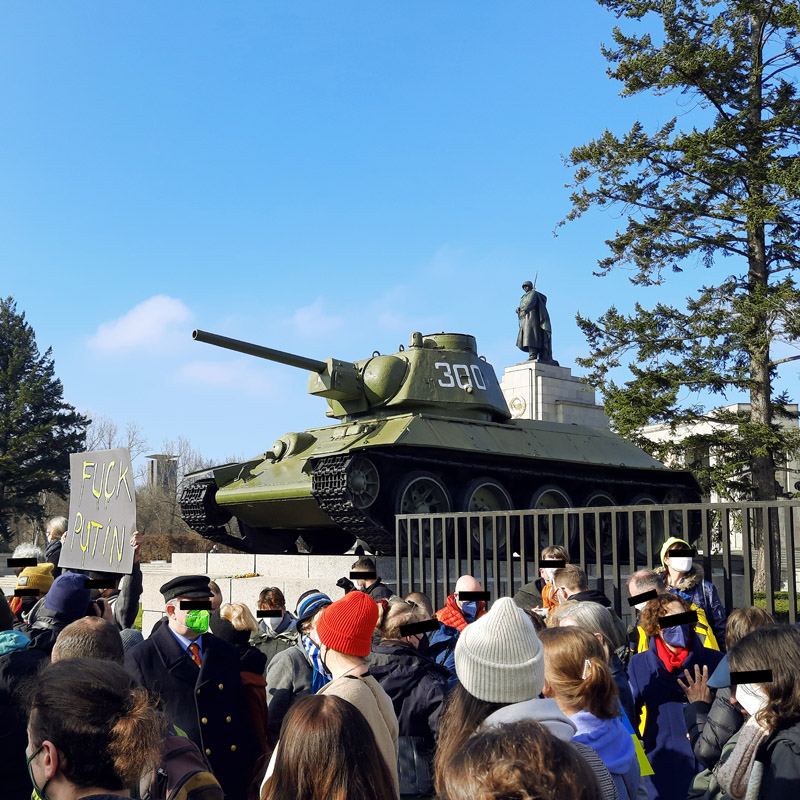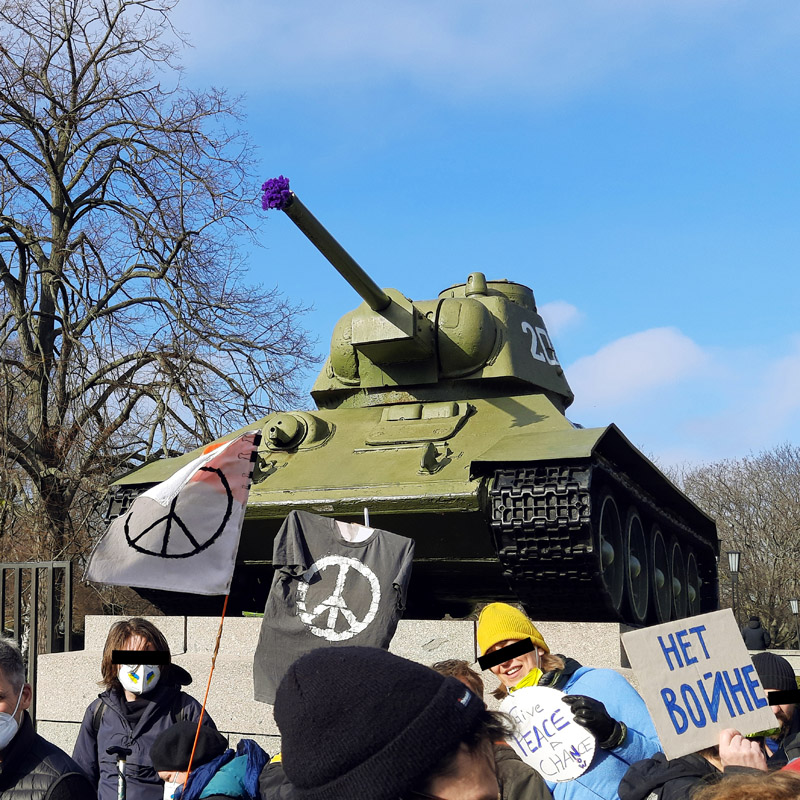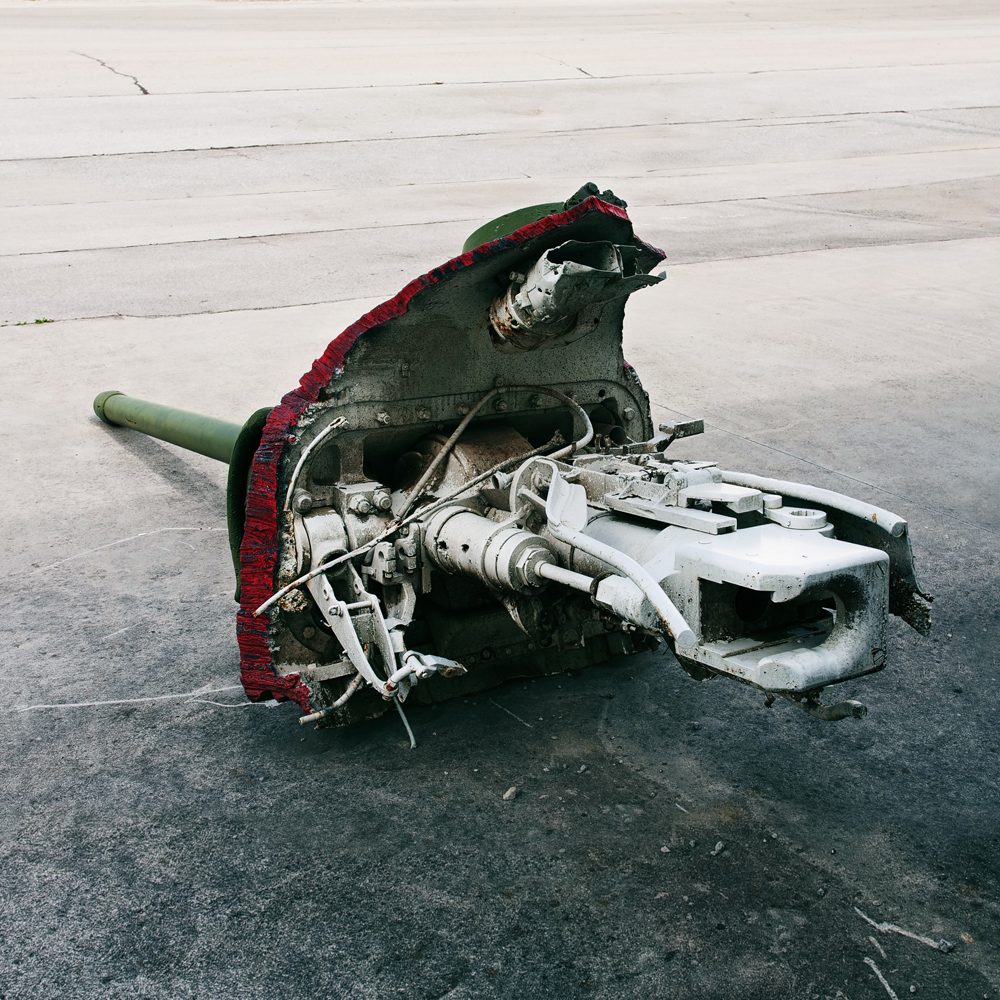Type: Medium Tank
Nation: Soviet Union
Period: World War 2
Location: Sowjetisches Ehrenmal im Tiergarten Berlin, Germany

The tank that killed its creator
Designed in the 1930s by Mikhail Koshkin at the Kharkiv tank factory in Ukraine, the T-34 was without a doubt the most important Soviet tank of World War II. In 1940 Koshkin personally drove one of the prototypes (which he had assembled in his spare time) all the way from Kharkiv to Moscow, then to Finland and back again to demonstrate his new masterpiece’s capabilities. Unfortunately on that journey he contracted pneumonia, of which he died in September 1940 – the very same month when the first of about 57,000 wartime production T-34s were leaving the factories. The relatively cheap and easy to build vehicle would remain in service for the rest of the war and – in upgraded form as the T-34/85 – would be used by many countries for decades to come.
Improvements from day one
The T-34 was originally intended to replace the lighter BT series and therefore shared some design similarities with these „fast tanks“. It was powered by a new version of the BT-7M‘s 500 hp twelve-cylinder V-2 diesel engine, but it had thicker armour and a more powerful 76.2 mm gun. Another commonality was the Christie suspension system, named after its American inventor John Walter Christie. Running on individually sprung large diameter road wheels, it provided a very smooth ride, but the big internal coil springs considerably reduced the space in the T-34‘s already not particularly roomy hull. For that reason, the Soviets planned to quickly replace the T-34 with the improved T-34M in 1941. This version would have used a superior torsion bar suspension like the KV-1 heavy tank – but Operation Barbarossa, the German invasion in June, caused this project’s instant cancellation. Instead, all production efforts were focussed on the pre-existing standard T-34.
Legends die hard
When the German Army encountered the T-34 for the first time, they experienced a nasty surprise. Their standard 3.7 cm anti-tank gun, for example mounted on the Panzer 38(t)s and early Panzer IIIs, infamously gained the nickname “Heeresanklopfgerät” (= army’s door-knocking device) since many shells would simply bounce off the T-34’s sloped armour. It is also true that the “T-34 shock” made Nazi Germany speed up development of their new generation of armoured vehicles, especially Panther and Tiger. But in reality, like any other tank, the T-34 was by no means invincible. At the beginning of Barbarossa the Red Army had had 935 operational T-34s, but six weeks later there were only 160 left. In the meantime 525 replacements had been sent to the front, so that the actual loss number for that time period was as high as 1,300. Right from the start the Germans had found ways to destroy T-34s – just like they had done a year earlier when they had faced the tough Matilda IIs and Char B1 bis in France. Of course, the high losses of early T-34s were not only caused by the tank‘s constructional shortcomings such as its ineffective two-man turret. Other contributing factors were the lack of trained crews as well as severe structural problems in the Red Army after Stalin’s brutal purges of 1937.
Silent witnesses of history
These particular vehicles with the turret numbers 200 and 300 were participating the Battle of Berlin in late April and early May 1945 – allegedly being the first tanks to enter the encircled city to finally put an end to the Nazi regime. Both tanks are late-production 1943 models which had received drum-shaped commander‘s cupolas by that year‘s autumn. While „300“ has a smoothly rounded bow edge, the one on „200“ looks distinctly more rough and angular. As this was a common feature of mid-war T-34s, it is quite possible that „200“ was built later than „300“. Interestingly, their road wheels are a wild mix of four different production types. The tanks are part of the Soviet „Ehrenmal“ war memorial close to the Reichstag building. More than 2,000 Red Army soldiers from World War 2 are buried at this site. During the years of the Berlin Wall, the Ehrenmal would be curiously located in the British occupation zone, forming a Soviet enclave. The T-34s are overlooking the big parade street that connects the Brandenburger Tor with the Siegessäule (= victory column). The street name „Straße des 17. Juni“ commemorates the East German People’s Uprising of 1953, which had been violently suppressed by the East German police and the Soviet Army – who had sent several T-34/85s to disperse the crowd. On 27 February 2022 well over 100,000 people gathered on this street to peacefully protest against Russia‘s invasion of Ukraine that had started three days earlier.


12 responses to “T-34/76 (Model 1943)”
[…] American M26 Pershing. Originally the Panther had been designed to weigh 30 metric tons like the T-34 and the M4 Sherman, but as requirements changed, the combat weight went up accordingly. At one […]
LikeLike
[…] Union in 1941, when the Germans realized that their vehicles were being outclassed by the Soviet T-34 and […]
LikeLike
[…] The Allied soldiers praised the Panther for its wide tracks that gave it excellent mobility over soft terrain. Even though the Sherman was a third lighter than the 45-ton Panther, it often got stuck in places where its German opponent still could operate. The Panther‘s wide tracks were one of the design features which had been directly copied from the Soviet T-34. […]
LikeLike
[…] final design would be heavily influenced by the Wehrmacht‘s unpleasant encounter with the Soviet T-34 during Operation Barbarossa in 1941. The concept of sloping armour to increase its effective […]
LikeLike
[…] than 20 percent of all German tanks on the Eastern Front. However, the superior Soviet KV-1s and T-34s soon rendered the Panzer 38(t)s and their 37 mm guns useless. In 1942 production was eventually […]
LikeLike
[…] very successful Soviet T-34 was one of the most well-balanced medium tanks of World War 2. The hull armour was sloped on all […]
LikeLike
[…] KV-1 was armed with a 76.2 mm gun which was later adopted by the much lighter T-34/76 medium tank. This lead to the development of the KV-85 which had a 85 mm gun – which also turned […]
LikeLike
[…] some argued that it might be time to remove Soviet war memorials such as the one in Kienitz or the T-34s in Berlin-Tiergarten as a statement against Russian aggression. The people of Kienitz, however, chose a different way. […]
LikeLike
[…] the chassis of the KV-1S heavy tank. Designed to attack enemy fortifications, it was replacing the T-34-based SU-122 which had been found unsuitable to fight against tanks. “SU” stood for […]
LikeLike
[…] gunner and radio operator. The large forward-hinged turret hatch was borrowed from the very early T-34 and enabled the crew to quickly bail out in case the vehicle started to […]
LikeLike
[…] Ausf. L model was introduced in December 1941 as a reaction to the “T-34-shock” on the Eastern Front. Already shortly after the experiences in France in the summer of […]
LikeLike
[…] World War the Panther was a superior vehicle on paper. Its 7.5 cm high velocity gun could destroy a T-34 or a Sherman over long distances, way before these tanks could come close enough to penetrate the […]
LikeLike